Articles
- Page Path
- HOME > J Korean Powder Metall Inst > Volume 25(4); 2018 > Article
-
ARTICLE
- A Study on the Recovery of Li2CO3 from Cathode Active Material NCM(LiNiCoMnO2) of Spent Lithium Ion Batteries
- Jei-Pil Wanga,*, Jae-Jung Pyoa, Se-Ho Ahna, Dong-Hyeon Choia, Byeong-Woo Leeb, Dong-Won Leec
-
Journal of Korean Powder Metallurgy Institute 2018;25(4):296-301.
DOI: https://doi.org/10.4150/KPMI.2018.25.4.296
Published online: July 31, 2018
a Department of Metallurgical Engineering, Pukyong National University, Busan 48547, Republic of Korea
b Department of Materials System Engineering, Pukyong National University, Busan 48547, Republic of Korea
c Titanium Department, Korean Institute of Materials Science(KIMS), Changwon 51508, Republic of Korea
- *Corresponding Author: Jei-Pil Wang, TEL: +82-51-629-6741, FAX: +82-51-629-6742, E-mail: jpwang@pknu.ac.kr
• Received: August 16, 2018 • Revised: August 18, 2018 • Accepted: August 20, 2018
© The Korean Powder Metallurgy Institute. All rights reserved.
- 2,337 Views
- 64 Download
- 9 Crossref
Figure & Data
References
Citations
Citations to this article as recorded by 

- Hydrogen Reduction of Black Mass Recovered from NCM-based Spent Lithium-ion Batteries
Jae-Ho Hwang, Sang-Yeop Lee, So-Yeong Lee, Ho-Sang Sohn
Resources Recycling.2025; 34(3): 34. CrossRef - Reduction Roasting of Cathode Materials of NCM Based Lithium-ion Batteries Using CH4(g)
Jae-Ho Hwang, Sang-Yeop Lee, Ho-Sang Sohn
Resources Recycling.2025; 34(4): 48. CrossRef - High‐Rate Rechargeable Li/SOCl2 Batteries Enabled by Cobalt Phthalocyanine Cathodic Catalysts
Yingxuan Song, Haibo Ouyang, Zhanwei Xu, Zeyang Zhang, Kang Li, Jianfeng Huang, Zhi Li, Tian Wang, Jun Yang
Small.2025;[Epub] CrossRef - Metals Recovery from Spent Lithium-ion Batteries Cathode Via Hydrogen Reduction-water Leaching-carbothermic or Hydrogen Reduction Process
Tahereh Rostami, Behnam Khoshandam
Mining, Metallurgy & Exploration.2024; 41(3): 1485. CrossRef - Influence of Flow-Gas Composition on Reaction Products of Thermally Treated NMC Battery Black Mass
Christin Stallmeister, Bernd Friedrich
Metals.2023; 13(5): 923. CrossRef - Holistic Investigation of the Inert Thermal Treatment of Industrially Shredded NMC 622 Lithium-Ion Batteries and Its Influence on Selective Lithium Recovery by Water Leaching
Christin Stallmeister, Bernd Friedrich
Metals.2023; 13(12): 2000. CrossRef - Environmentally Friendly Recovery of Lithium from Lithium–Sulfur Batteries
Lilian Schwich, Bernd Friedrich
Metals.2022; 12(7): 1108. CrossRef - Early-Stage Recovery of Lithium from Tailored Thermal Conditioned Black Mass Part I: Mobilizing Lithium via Supercritical CO2-Carbonation
Lilian Schwich, Tom Schubert, Bernd Friedrich
Metals.2021; 11(2): 177. CrossRef - Exploring a green route for recycling spent lithium-ion batteries: Revealing and solving deep screening problem
Jiadong Yu, Quanyin Tan, Jinhui Li
Journal of Cleaner Production.2020; 255: 120269. CrossRef
A Study on the Recovery of Li2CO3 from Cathode Active Material NCM(LiNiCoMnO2) of Spent Lithium Ion Batteries
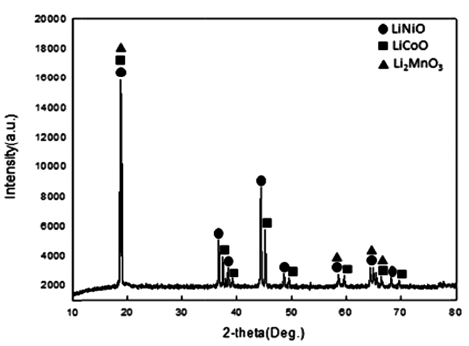



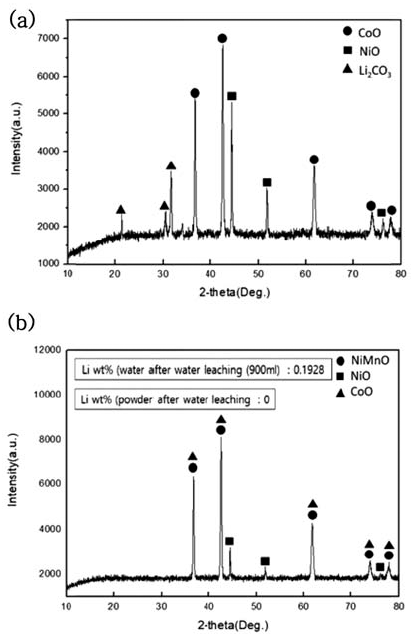
Fig. 1
XRD pattern of waste lithium-ion battery powder in this study.
Fig. 2
Schematic diagram of experimental apparatus for carbonation of NCM system waste Li-ion battery powder.
Fig. 3
TGA curve of NMC waste Li-ion battery powder.
Fig. 4
XRD patterns of (a) Raw sample (b) After carbonation at 600°C (c) After carbonation at 700°C (d) After carbonation at 800°C.
Fig. 5
XRD patterns of NMC system waste Li-ion battery powders after water leaching. (a) After carbonation at 800°C (b) Powder After water leaching
Fig. 1
Fig. 2
Fig. 3
Fig. 4
Fig. 5
A Study on the Recovery of Li2CO3 from Cathode Active Material NCM(LiNiCoMnO2) of Spent Lithium Ion Batteries
Table 1
Chemical composition of waste lithium-ion battery powder (wt. %)
Table 2
Chemical composition of NMC after carbonation
Table 3
Solubility of Li2CO3, NiO, CoO and MnO in water
Table 4
Weight change of sample and change of Li content in the overall process and content of Li in the process
Table 1
Table 2
Table 3
Table 4
TOP
 kpmi
kpmi


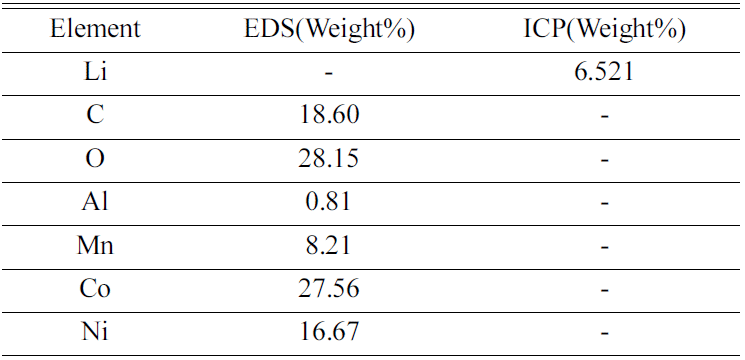

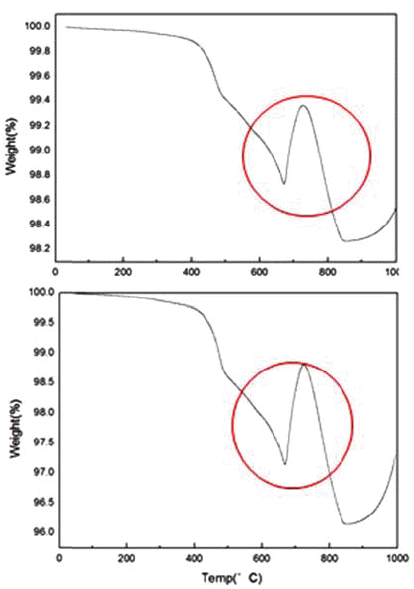


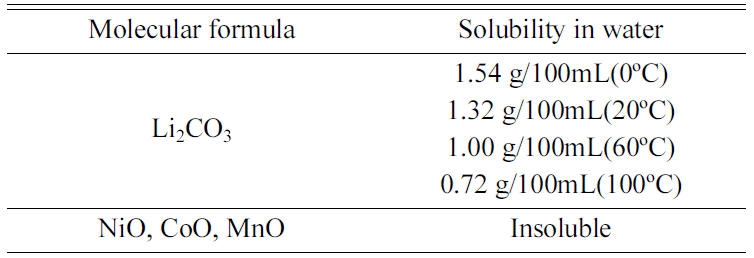

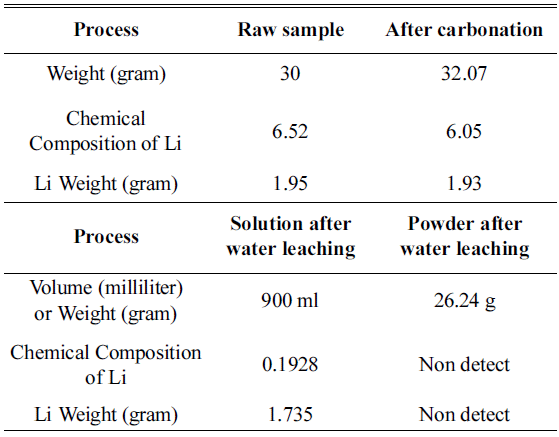
 Cite this Article
Cite this Article





